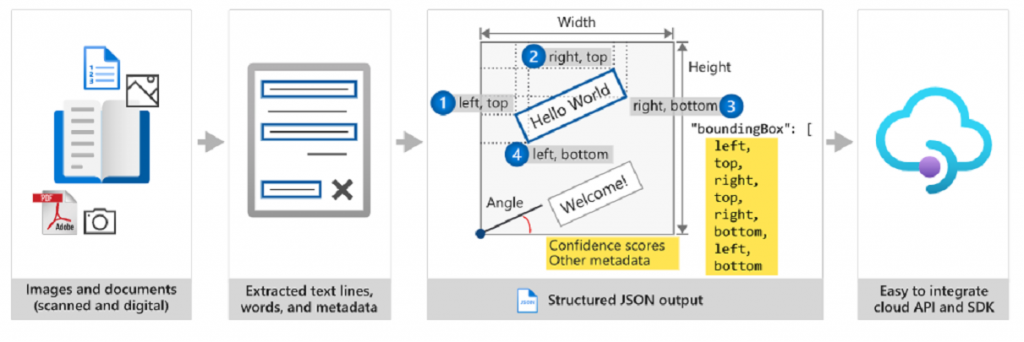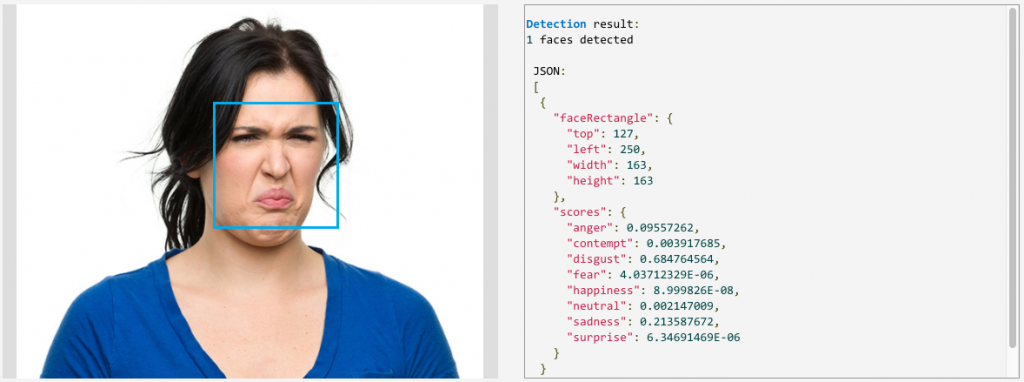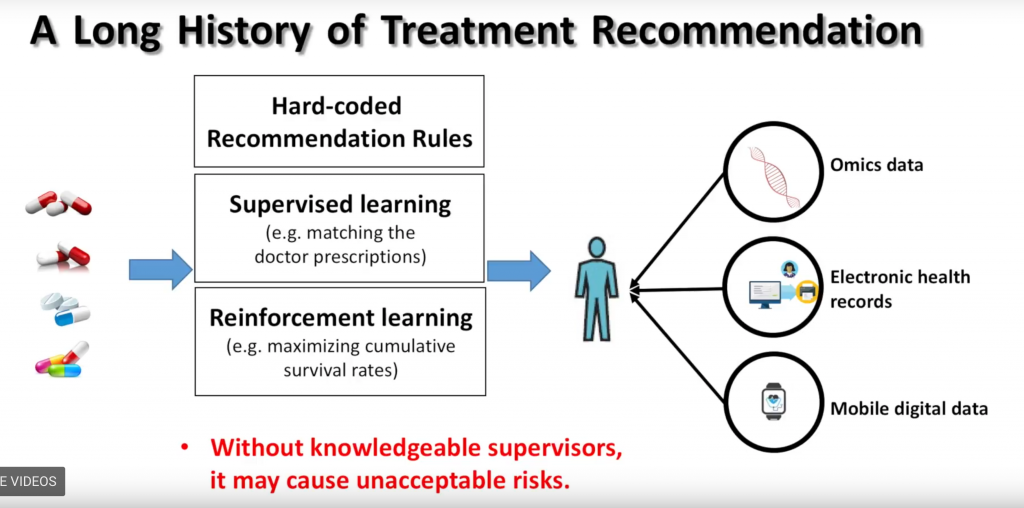Democratization of AI in Healthcare
Organizations are becoming increasingly digital and Artificial Intelligence is being deployed in many of them. Often small tech-savvy start-ups and large firms with huge funds, like those in technology and finance businesses, are deploying sophisticated forms of AI.
But several other companies are being left behind. They may not know how or where to deploy AI, or they may not have the resources to create their own AI. Cloud technologies are filling this gap. With options from Google, AWS, Microsoft, and plenty of other vendors, companies can begin exploring how AI can help them. The more that AI becomes accessible, the more companies – and users – can leverage it for their benefit.
Healthcare is often cited as an area that AI can help immensely. The democratization of AI in healthcare, which is being driven by cloud technologies, is leading to greater access and more predictive work in patient monitoring and smarter reactive responses to health issues.
ML and AI have traditionally been perceived as the domain of experts and specialists with PhDs. While democratization of AI is viewed differently by different organizations, a common theme has been to make AI adoption simpler.
The following are a few democratized AI services available as part of cloud providers (most of the examples are from Microsoft Eco System as a reference, however other providers also have similar services).
Handwriting Recognition

With Windows Ink, you can provide your doctors with the digital equivalent of almost any pen-and-paper experience imaginable, from quick, handwritten notes and annotations to whiteboard demos.
The Windows Ink platform, together with a pen device, helps create digital handwritten notes, drawings, and annotations. The platform supports capturing digitizer input as ink data, generating ink data, managing ink data, rendering ink data as ink strokes on the output device, and converting ink to text through handwriting recognition.
There are equivalent options in other platforms like iOS and Android which can be used for making similar applications for doctors.
Optical Character Recognition

Azure’s latest OCR technology Computer Vision Read API extracts printed text (in several languages), handwritten text (English only), digits, and currency symbols from images and multi-page PDF documents. It can extract text from text-heavy images and multi-page PDF documents with mixed languages and detect both printed and handwritten text in the same image or document.
Most hospitals have to deal with lot of documents, especially when it involves external parties like insurance companies. Healthcare organizations can increase productivity and cut down on costs by investing in OCR for managing medical documents.
Emotion APIs

The Azure Face service provides AI algorithms that can detect, recognize, and analyze human faces in images. Facial recognition software has varied applications like in security, natural user interface, image content analysis and management, mobile apps, and others.
Using this API, we can detect perceived facial expressions such as anger, contempt, disgust, fear, happiness, neutral, sadness, and more. It is important to note that facial expressions alone do not represent the internal states of people.
Speech Translation

The number of people in the U.S. who speak a language other than English is large and growing. Language barriers have been found to impede access to care, compromise quality, and increase the risk of adverse outcomes. When friends and family interpret, they are prone to omit, add, and substitute information.
The Azure Speech Translation API can translate incoming speech into more than 60 languages. This API enables real-time, multi-language speech-to-speech and speech-to-text translation of audio streams. With the Speech SDK, your applications, tools, and devices have access to source transcriptions and translation outputs for provided audio. Interim transcription and translation results are returned as speech is detected, and results can be converted into synthesized speech.
Health BOTs

- Providers have built health bot instances that triage patient issues with a symptom checker, help patients find appropriate care, and look up nearby doctors.
- Insurers have built health bot instances that give their customers an easy way to look up the status of a claim and ask questions about benefits and services.
Azure Health Bot empowers developers in healthcare organizations to build and deploy AI-powered, compliant, conversational healthcare experiences at scale. Combining built-in medical database with natural language capabilities to understand clinical terminology, it can be easily customized for various clinical use cases. The service ensures alignment with industry compliance requirements and is privacy protected to HIPAA standards.
Conversational intelligence also adapts dynamically as the health bot instance learns from previous interactions.
Text Analytics for Health
The healthcare industry is overwhelmed with data. They face an incredible challenge in trying to identify and draw insights from all that information. Unlocking insights from this data has massive potential for improving healthcare services and patient outcomes.
The Key Phrase Extraction API evaluates unstructured text, and for each JSON document, returns a list of key phrases.

The Text Analytics API lets you take unstructured text and returns a list of disambiguated entities, with links to more information on the web. The API supports both Named Entity Recognition (NER) for several entity categories, and entity linking.
Text Analytics for health performs NER, relation extraction, entity negation and entity linking on English-language text to uncover insights in unstructured clinical and biomedical text.
Reinforcement Learning

Medical diagnoses essentially involve mapping patients’ medical history, current symptoms, and other information to the correct disease profile. It can be an incredibly complex task representing an enormous burden (in both time and cognitive energy required) for busy clinicians.
Personalizer API uses reinforcement learning to select the single best action, known as reward action ID. Azure Personalizer is a cloud-based service that helps your applications choose the best content item to show your users.
Personalizer currently uses Vowpal Wabbit as the foundation for the machine learning. This framework allows for maximum throughput and lowest latency when making personalization ranks and training the model with all events.
Anomaly Detection

Anomaly detection in medical treatment can be used to discover deviations from regular patterns and determine whether the patient management is unusual. Detecting an anomaly from medical images including mammogram, CT or PET images is still an ongoing research problem drawing a lot of attention with applications in medical diagnosis.
The Anomaly Detector API enables you to monitor and detect abnormalities in your time series data without having to know machine learning. Using your time series data, the API determines boundaries for anomaly detection, expected values, and which data points are anomalies.
Detect anomalies in your streaming data by using previously seen data points to determine if your latest one is an anomaly. This operation generates a model using the data points you send, and determines if the target point is an anomaly.
Conclusion
Healthcare transformation requires a great amount of AI integration and implementation.
However most healthcare organizations don’t have enough resources and bandwidth to work on AI development and deployment. Also, AI Involvement by its very nature is iterative and more concentration is required on involving the stake holders and arriving at a consensus. Remember, the success of AI depends on richness of data which is the main responsibility of healthcare organizations, while implementation of AI can be taken care by these cognitive services.
About the Author –

Srinivasan Sundararajan
Srini is the Technology Advisor for GAVS. He is currently focused on Healthcare Data Management Solutions for the post-pandemic Healthcare era, using the combination of Multi Modal databases, Blockchain and Data Mining. The solutions aim at Patient data sharing within Hospitals as well as across Hospitals (Healthcare Interoprability), while bringing more trust and transparency into the healthcare process using patient consent management, credentialing and zero knowledge proofs.
Back to blogs

